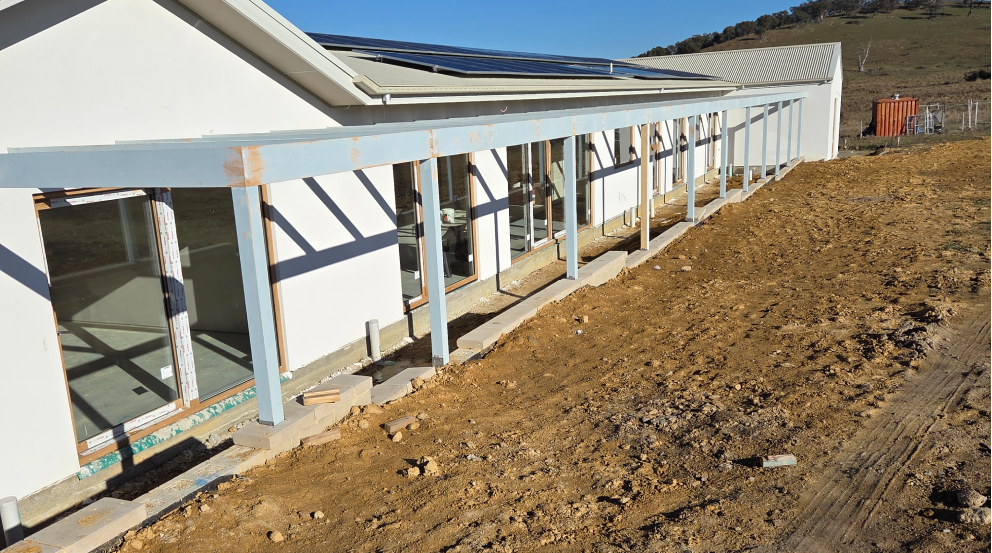So you’re looking to convert your home from gas to electric? That’s great. Going electric is better for the environment, for your health – and can be better for your hip pocket. The trick is to break down the transition into manageable steps. Here’s how to get started.
What does ‘going electric’ actually mean?
‘Going electric’ simply means switching off your gas and converting your appliances – heating, cooking, hot water, potentially your car – over to electricity (often the form of rooftop solar panels and, ideally, battery storage). Building or renovating is a great time to go electric, but it’s something homeowners can take steps towards whenever it suits. You don’t need permits or specialist infrastructure. According to the Grattan Institute (p.3), it’s also a crucial step if Australia is going to achieve its net-zero carbon goals by 2050.
“We know our customers care deeply about climate action,” says Jane Kern, Bank Australia’s Head of Impact. “For Australia to meet its climate targets, buildings need to reduce emissions quickly, so the most important collective action households can take towards a safe climate is switching away from fossil fuels and towards all-electric.”
.jpeg)
Benefits of switching your gas to electric
Australia has a great opportunity when it comes to clean energy homes. In addition to helping us take action on climate together, getting off gas can be a way for households to save money on their energy bills. Here are just a few of the benefits of having an all electric home vs gas.
Better for climate
Your gas cooktop might seem like small climate potatoes, but it’s really a question of scale. There are about five million homes in Australia on gas. And carbon emissions from producing and using gas account for 22% of Australia’s overall emissions (p.3). That’s a huge opportunity to reduce Australia’s carbon footprint by simply switching away from fossil fuels.
Can save you money
One of the most compelling reasons to go electric is simple: you can save money. According to the Climate Council, running an all-electric home costs around $1,000 less per year than a fossil fuel home. Victorian Government agency Sustainability Victoria has also researched how much individual households can save based on the types of upgrades they make, combined with the size and energy efficiency of their home. While of course there are upfront costs involved in switching from gas to electric appliances, savings can pay these off over time (plus it’s the best thing for the planet and your health).
Getting your home off gas: a quick guide | Climate Council
Calculate heating running costs | Sustainability Victoria
Safer for your health
Gas stoves and other appliances are an established source of indoor air pollution. Some studies suggest that gas cooking and passive cigarette smoke create a comparable risk of childhood asthma.
Sustainability at home
In an average Victorian home, heating and water heating account for a whopping 60% of the house’s running costs. By switching from gas to electric, you’re making the move towards a more environmentally friendly and sustainable home. (Learn more ways to make your home more energy efficient.)
.jpeg)
How to change from gas to electric
The biggest gas appliances in the home are your heater, your stove and your hot water system. Here’s how to switch them over and go all electric.
Convert your gas central heating to electric
Heating appliances generally use the most energy in the home, so if you’re looking for the best bang for your buck, start there. The best alternative to gas heating is an electric reverse-cycle, split-system air conditioner. This is generally your lowest-cost heating option, and it generates the fewest greenhouse emissions.
Electric space heaters are another alternative, although they’re less efficient. If you want to get started, Sustainability Victoria has some good tips for heating your home.
Switch to electric hot water
38% of Australian houses use gas to heat up their water, but there’s a greener option: an electric heat pump. Heat pumps use a refrigeration cycle to extract heat from the air. They require 60% to 75% less electricity than conventional electric storage water heaters, which is why you’re seeing them everywhere these days. When you stack them up against gas, heat pumps are far cheaper to run: about $120 a year, according to Sustainability Victoria. And over time these savings outweigh the installation costs.
Replace gas appliances
Your gas stove is the big one here. To go ‘all electric’, you’ll need to replace your gas cooktop with an electric induction cooktop. These can range in price from about $700 up to $4000 (Choice.com.au has a handy product guide). But how do induction cooktops work? They use electromagnetic energy to interact with induction-compatible cookware, making it hot. It’s a fast and even cooking method, and the technology has really improved over the years. A lot of top chefs even prefer induction to gas.
Install solar panels
The cheapest and most sustainable way to power all this is with a good quality rooftop-solar system, combined with battery storage. Fair warning: this can be a significant upfront cost – depending on the system you choose, and your needs, prices can range from $4000 up to $30,000 – but there are also various rebates and incentive schemes, depending on which state you live in. And because solar power is so much cheaper than a combination of gas and grid, most solar panel systems end up paying for themselves in about 5.3 years. As always, start by doing your research and comparing quotes.
And don’t forget, by making your house more sustainable, you may also qualify for a Bank Australia Clean Energy Home Loan.
“Our Clean Energy Home Loan rewards customers who are buying or building a new green home, or making ambitious green upgrades to their existing home,” Jane says. “For customers with an existing home, they can qualify for a reduced interest rate if they have make at least three eligible upgrades in the last 12 months. These upgrades can include installing a new hot water heat pump, a new efficient air conditioning unit, solar or battery.”
.jpeg)
Renting? Check out these energy efficient and electric home tips
.webp)







